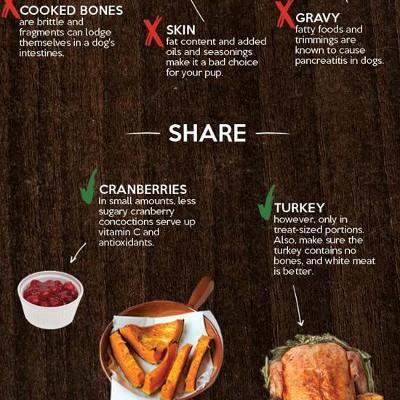By Dean Vickers, Director of Animal Welfare Studies and Education at PetSafe
 Easter is one of the most fascinating holidays of the year. It blends pagan traditions with Judeo-Christian beliefs and allows families to come together and celebrate new life and new beginnings. Families and friends celebrate their traditions and, in some cases, the traditions of others.
Easter is one of the most fascinating holidays of the year. It blends pagan traditions with Judeo-Christian beliefs and allows families to come together and celebrate new life and new beginnings. Families and friends celebrate their traditions and, in some cases, the traditions of others.
We attend services, watch parades, share the Seder plate, hunt for eggs, light bonfires and drool over delectable treats given by the Easter Bunny. But, before we hide and hunt for eggs, we color them. I love this! I enjoy having friends and family over, including their dogs; crack open bottles of food coloring and vinegar – along with a few bottles of merlot – and enjoy the festivities.
Historically, the egg has been a symbol of new life and new beginnings. During the Easter season, the image, and the meaning, of the egg takes center stage. As family and friends gather, we enjoy the company almost as much as we enjoy the coloring. As with any of my family’s holiday gatherings, the evening isn’t complete until a winner is determined. Yes, I said ‘winner.’ What can I say, we are competitive. You have your traditions, we have ours.
Just so you are up to speed, eggs are judged in 4 categories:
1. Traditional: This is the basic American Easter Egg in its most pure form. It can be a solid color or multi colored. The key here is that it needs to be ‘dipped’ using a spoon or the wire contraption that comes with various kits. We look for evenness of the dye and sharpness of the lines; you will be penalized if there is an unintentional color bleeding, or it the dye ‘pools’ in one spot. We are pretty hardcore.
2. Artistic: This category opens the field for the more specialized traditions and those with more experience in the art and skill behind creating egg’tastic works of art. Pysanky Eggs, the ornate Ukrainian eggs created with beeswax are staples in this category.
3. Artistically Challenged: I must admit, I unashamedly, fall into this category. It is pretty much what it sounds like. Those of us, who are not blessed with talent, or patience, compete on this level. This category is nice, because it can be a ‘catchall’ category and we don’t feel as bad about our artistic deficiencies.
4. Mixed Medium: This category allows additional materials to be included as supporting the overall design of the egg. The category stemmed from having a friend bedazzle her eggs, and not really having a category that would fit. We liked the concept, so it grew from there. The use of LED lights and movable parts are encouraged in this category. For the more experienced, egg dioramas can also fall in this category.
Yes, I know, perhaps a little sad, and I am not certain what precise year the childish exuberance of coloring a simple egg morphed into a contest of epic proportions, but it is still enjoyable spending time with family, friends and a sea of dogs. Additionally, if you think this is extreme, you should see the schematic plans created for the egg hiding.
Speaking of dogs, mine love this time of year. I’ve learned to put the Easter baskets out of reach, otherwise they will be pillaged. Each spring, animal clinics see an increase in visits, particularly around the Easter holiday. Pets and chocoholics are not a good mix. We all know that chocolate can be toxic to pets, it contains theobromine and pets are not able to fully metabolize it. If they consume enough chocolate, it can be fatal. Depending on the type of chocolate ingested and the amount eaten, various problems can occur. White chocolate has the least amount of stimulants and baking chocolate has the highest.
Here is a list of the most common sources of chocolate and the amount leading to toxicity:
White Chocolate: Mild signs of toxicity can occur when 45 ounces per pound of body weight is ingested. Severe toxicity occurs when 90 ounces per pound of body weight in ingested. This means that a 20-pound dog would need to ingest at least 55 pounds of white chocolate to cause nervous system signs. A 10-pound cat would need to ingest 27 pounds. These high amounts mean that theobromine toxicity from white chocolate is highly unlikely.
Milk Chocolate: Mild signs of toxicity can occur when 0.7 ounces per pound of body weight is ingested. Severe signs occur when 2 ounces per pound of body weight is ingested. This means that a little less than one pound of milk chocolate can be toxic to the nervous system of a 20-pound dog. A 10-pound cat would need to ingest 1/2 pound.
Semi-Sweet Chocolate: Mild signs of toxicity can occur when 1/3 ounce per pound of body weight is ingested. Severe signs occur when 1 ounce per pound of body weight is ingested. This means that as little as 6 ounces of semi-sweet chocolate can be toxic to the nervous system of a 20-pound dog. A 10-pound cat would need to ingest 3 ounces.
Instant Cocoa: Mild signs of toxicity can occur when 1/3 ounce per pound of body weight is ingested. Severe signs occur when 1 ounce per pound of body weight is ingested. This means that as little as 6 ounces of semi-sweet chocolate can be toxic to the nervous system of a 20-pound dog. A 10-pound cat would need to ingest 3 ounces.
Baking Chocolate: Mild signs of toxicity can occur when 0.1 ounce per pound of body weight is ingested. Severe signs occur when 0.3 ounce per pound of body weight is ingested. Two small one-ounce squares of baking chocolate can be toxic to a 20-pound dog. A 10-pound cat would need to ingest 1 ounce of baking chocolate. Once toxic levels are eaten, you may notice restlessness, hyperactivity, muscle twitching, increased urination, and excessive panting. The high fat content in chocolate can also cause vomiting and diarrhea.
If you suspect your pet has eaten chocolate, consult your veterinarian immediately. Animals treated for chocolate toxicity generally recover and return to normal within 24 to 48 hours. In addition to the chocolate, the plastic grass often used in Easter baskets can be harmful. Although generally more enticing to cats, dogs have been known to eat it too. Pets cannot digest plastic grass, so it can cause severe intestinal damage. A better, and a more environmentally conscious, option is the paper grass. It comes in a variety of colors and is more pet friendly.
When I put together the baskets for my dogs, I use a combination of treats and toys. I get together with friends and bake natural dog treats using a variety of Easter themed cookie cutters. It is fun for us, and I like it because I know what is in the treat. My dogs also love getting a Bouncy Bone and a Squeeze Meeze, as well as various rawhide chews. J’Maul will get his annual Ohio State University bandanna (Go Bucks!) and then we will head over to the park to meet friends.
On a final note, I never think it is a good idea to give live animals as Easter gifts. Although I can appreciate the thought behind the idea, thousands of these Easter gifts- chicks, ducklings and bunnies- die from lack of proper care and stress, or wind up at a shelter or rescue organization. A better option would be to make a donation to your local animal shelter or humane society or donate money to a cause you believe in. This year, I will be making a donation to the PetSafe Ethos Fund. This fund provides grant money to animal welfare organizations. To learn more about it, visit: PetSafe.net/ethos.
About the author As Director of Animal Welfare Studies and Education Dean Vickers provides education on the proper use and benefits of PetSafe products to legislators and pet owners worldwide. He also collaborates with the PetSafe new product engineers and designers to facilitate new product and improve existing product design based on feedback from the pet behavior community. Spending most of his career in advocacy, the former Ohio State Director for The Humane Society of the United States (HSUS) has assisted with animal abuse and neglect cases, as well as assisted with rescue during natural disasters, animal hoarding, and large scale animal abuse cases.
He also worked with law enforcement on several dog and cock fighting raids and spent years advocating to strengthen animal welfare laws at the Ohio statehouse both with HSUS and as an independent consultant. Vickers has conducted trainings, written articles and given speeches on animal welfare, rescue and advocacy issues throughout the United States for diverse audiences, including: National Animal Control Association, Midwest Veterinary Conference, National Animal Care Expo, National Conference for Animals in Disasters and numerous smaller venues. Vickers is a graduate from The Ohio State University with a degree in History and Political science. He currently lives in Knoxville with his 3 rescue dogs, Annikka, J’Maul and Isabella.


